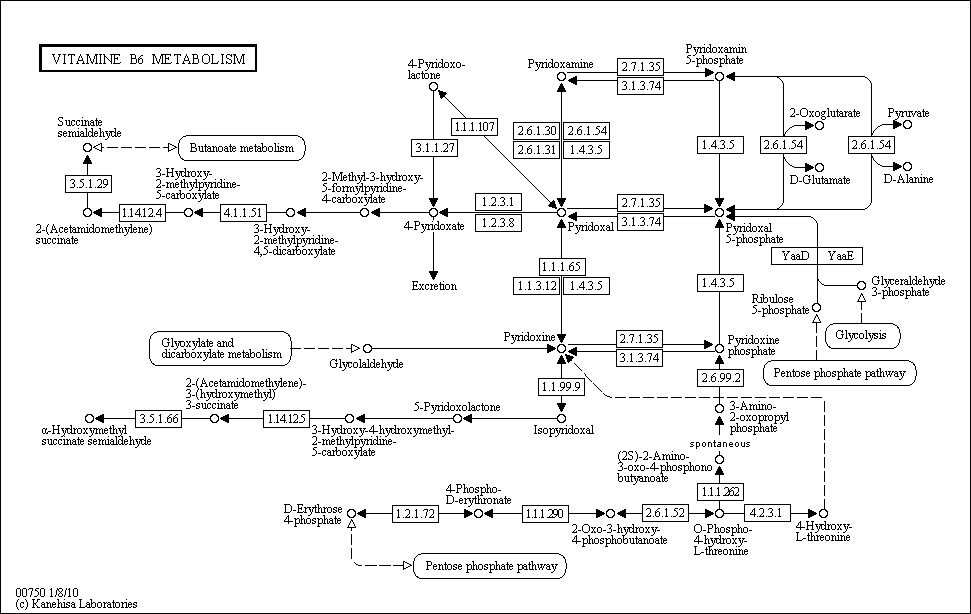Vitamin B6 Metabolism
Description: Vitamin B6 is a water-soluble vitamin and is part of the vitamin B complex group. Pyridoxal phosphate (PLP) is the active form of vitamin B6 and is a cofactor in many reactions of amino acid metabolism, including transamination, deamination, and decarboxylation. Seven forms of this vitamin are known: pyridoxine (PN), pyridoxine 5\u2019-phosphate (PNP). pyridoxal (PL), pyridoxal 5\u2019-phosphate (PLP), pyridoxamine (PM), pyridoxamine 5\u2019-phosphate (PMP) and 4-pyridoxic acid (PA). PA is the catabolite which is excreted in the urine. The absorption of pyridoxal phosphate and pyridoxamine phosphate involves their dephosphorylation catalyzed by a membrane-bound alkaline phosphatase. Those products and non-phosphorylated forms of vitamin B6 in the digestive tract are absorbed by diffusion, which is driven by trapping of the vitamin as 5\u2019-phosphates through the action of phosphorylation (by a pyridoxal kinase) in the jejunal mucosa. The trapped pyridoxine and pyridoxamine are oxidized to pyridoxal phosphate in the tissue. Several products of vitamin B6 metabolism are excreted in the urine including 4-pyridoxic acid. It has been estimated that 40-60% of ingested vitamin B6 is oxidized to 4-pyridoxic acid. Other products of vitamin B6 metabolism that are excreted in the urine when high doses of the vitamin have been given include pyridoxal, pyridoxamine, and pyridoxine and their phosphates. Source: Pathman

Related BMRB Molecules
- D-Alanine
- Glycolaldehyde
- Alpha-Ketoglutaric-Acid
- Pyridoxal
- Pyridoxal-5-Phosphate
- Pyridoxamine
- Pyridoxamine-5-Phosphate
- 4-Pyridoxic Acid
- Pyridoxine
- Pyruvic-Acid
- D-Ribulose-5-Phosphate
For complete information about pathway, see KEGG [map00750]
